The rapid advancement of technology across various sectors has revolutionized how we live and work. For agriculture with the Internet of Things (IoT), a new wave of innovation has emerged that promises increased productivity, sustainability, and efficiency. With a network of interconnected devices and sensors that collect and exchange data, IoT in Agriculture will enhance the management of livestock rearing and crop cultivation, fostering predictability and optimizing efficiency. By harnessing IoT in the agriculture industry, farmers & agribusinesses can make data-driven decisions, maximize resource utilization, monitor crop health, and automate various processes.
In this article, we’ll explore some of the applications of the Internet of Things in agriculture with their benefits. So, if you’re considering investing in smart farming or planning to build an IoT solution for agriculture, this blog is for you.
What is Smart Agriculture, and Why Do We Need IoT in Agriculture Industry?
Smart Agriculture, also called precision agriculture or agrotechnology, is all about using advanced technologies & data-driven approaches for optimizing agricultural practices and improving overall efficiency. Smart farming leverages the power of automation, connectivity, and real-time monitoring to enhance decision-making processes & maximizing agricultural output.
IoT provides a network of interconnected devices and sensors for the industry that collects and share data. They can be embedded in soil, crops, machinery, and livestock to monitor temperature, humidity, soil moisture, nutrient levels, and animal behavior. Further, this gathered data is then analyzed & utilized for making informed decisions about irrigation, fertilization, disease prevention, and overall farm management. For instance, farmers can now access real-time data from their smartphones or tablet and monitor soil conditions and crop health. Precise insights enable efficient decision-making to maximize fertilizer usage and optimize farm vehicle routes.
Market Size of IoT in Agriculture
The Global IoT and Agriculture Market is rapidly growing, with a project valuation of USD 26.93 Billion by 2027.[1] The increasing demand for agricultural produce fuels this market, IoT and AI technology adoption, and a focus on livestock monitoring and disease detection to enhance farming efficiency.
Food companies worldwide are embracing modern devices and technologies for systematic storage to meet the rising demands for quality food commodities. Meanwhile, governments actively promote smart farming through awareness programs, policy transformations, and collaborations with the private sector.
Impact of the Industrial Internet of Things on Agriculture
Industrial IoT (IIoT) has significantly impacted the agriculture industry. Today, it is revolutionizing traditional farming practices and enabling a new era of smart agriculture.
Listed below are some of the critical impacts of IIoT in agriculture:
- Enhanced efficiency and productivity with remote monitoring of soil conditions, weather patterns, crop health, and equipment performance.
- Improved resource management with intelligent irrigation systems to adjust watering schedules based on real-time data, ensuring that crops receive the right amount of water at the right time.
- Enhanced crop monitoring and disease detection enable continuous monitoring of crops, allowing farmers to detect early signs of illness, nutrient deficiencies, or pest infestations.
- Livestock monitoring and management for livestock health, behavior, and environmental conditions to track parameters like body temperature, heart rate, feeding patterns, and location in real time.
- Data-driven decision-making helps farmers to leverage insights to optimize production processes, fine-tune resource allocation, and mitigate risks.
- Supply chain optimization with end-to-end visibility and traceability throughout the agricultural supply chain – from field to fork, data collected along the value chain can be tracked and analyzed, ensuring transparency, quality control, and food safety.
IoT Applications in Agriculture
Here are some real-world applications of IoT in smart farming that are revolutionizing the way farms operate by enabling farmers to optimize resource use, automate processes, and make data-driven decisions.
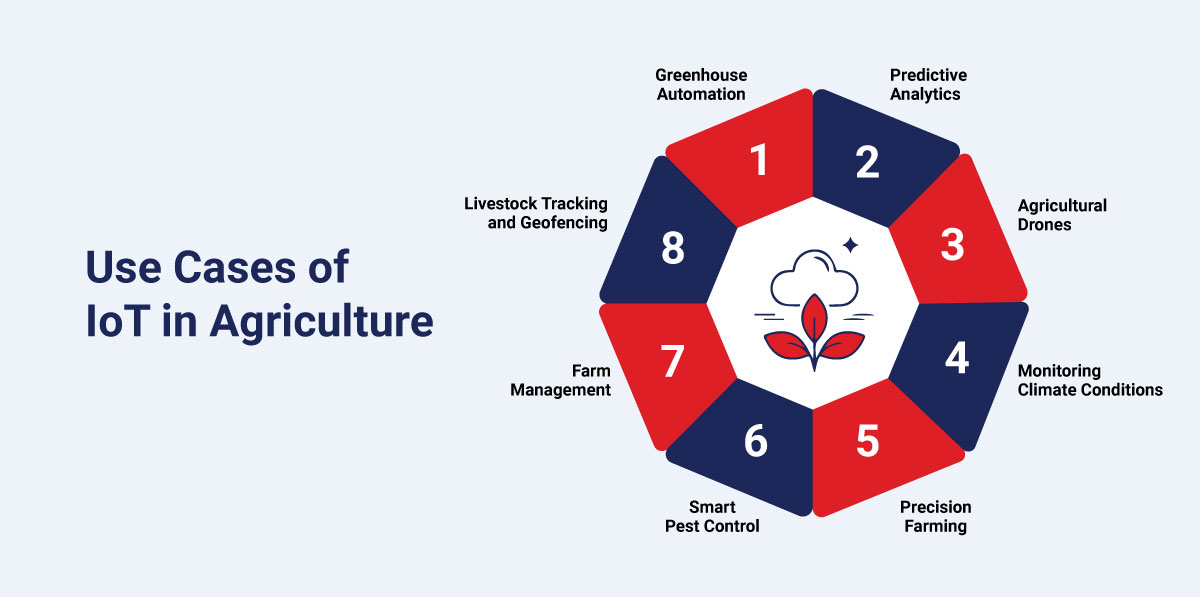
- Greenhouse Automation: IoT sensors and actuators are vital in greenhouse automation. They monitor and control crucial environmental factors such as temperature, humidity, and lighting. By maintaining optimal conditions, IoT enables careful cultivation, accelerates plant growth, and boosts overall greenhouse productivity.
- Predictive Analytics for Smart Farming: By collecting and analyzing data from various sources, including weather patterns, soil moisture levels, and crop health sensors, IoT empowers farmers with predictive analytics. This input enables making informed decisions regarding irrigation, crop rotation, disease prevention, and resource allocation.
- Agricultural Drones: IoT sensors and cameras support gathering data on crop health, plant density, and irrigation needs. It enables the farmers to analyze & identify problem areas, take proactive measures, and optimize their farming practices. It leads to increased yield and a reduction in resource wastage.
- Monitoring Climate Conditions: The installation of IoT weather stations across farms helps collect accurate data on temperature, humidity, wind speed, and rainfall. This input can be used in real-time to make precise irrigation schedules, pest control, and crop management decisions.
- Precision Farming: It is made possible by combining data from different sources, such as soil sensors, satellite imagery, and machine vision. And this data-driven approach enables farmers to optimize pesticide & water usage for higher crop yields.
- Smart Pest Control: IoT devices can precisely detect pests using sensors and image recognition technology. Early detection enables farmers to implement targeted pest control measures, thereby minimizing crop damage and reducing the need for excessive pesticide usage.
- Farm Management: These systems enable farmers to consolidate and manage all their data in a suitable location. From crop yields and livestock records to financial information and inventory levels, the system is a centralized hub for planning schedules and optimizing resource use.
- Livestock Tracking and Geofencing: With IoT-enabled tracking devices, farmers can monitor the location and behavior of their livestock in real time. Geofencing allows them to set virtual boundaries and receive alerts if animals stray beyond designated areas. This technology ensures better management of grazing patterns and enhances animal welfare.
Advantages of IoT in Agriculture
From improving efficiency and reducing wastage to enabling precision farming and enhancing product quality, IoT empowers farmers to meet the challenges of feeding a growing population while ensuring a more sustainable future for agriculture. Let’s look at the key benefits of IoT in agriculture:
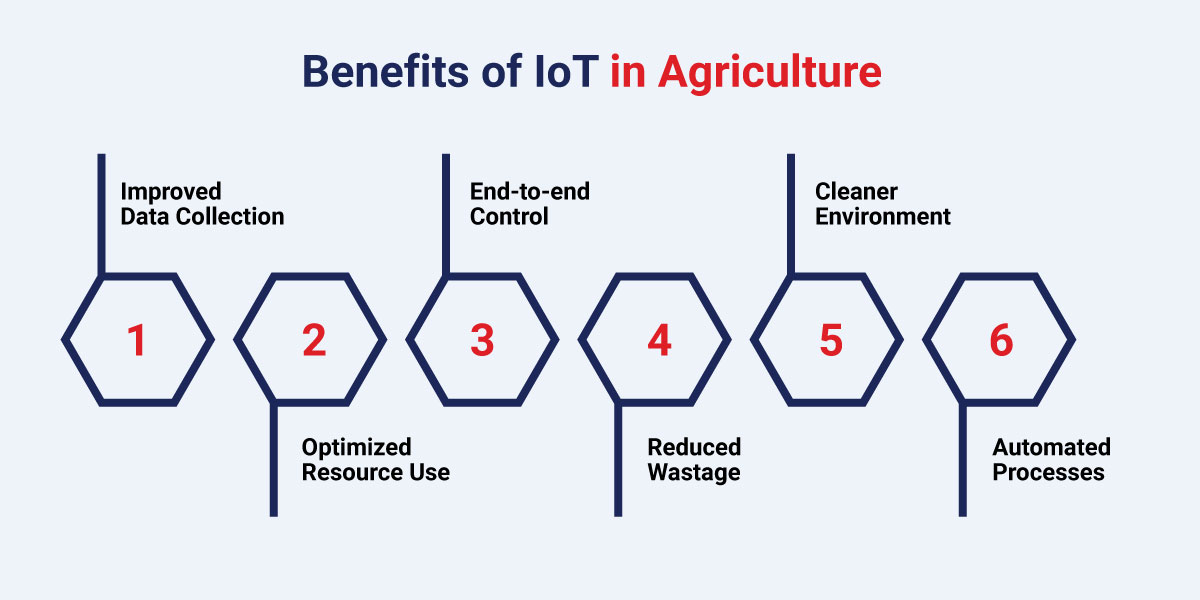
- Improved Data Collection for Enhanced Farming Efficiency: Farmers strive to produce more on shrinking land amidst fluctuating weather patterns and degrading soil conditions. Fortunately, IoT-enabled agricultural solutions have come to their rescue, empowering them to monitor their crops and environmental conditions in real time. Farmers gain valuable insights and can predict potential issues by swiftly collecting crucial data on weather, land conditions, livestock, and crop health. This information enables them to make informed decisions & proactively address challenges, increasing their farming efficiency.
- Optimized Resource Use for Sustainable Agriculture: IoT precision farming allows farmers to gather real-time data from sensors deployed across farms. With this input at their fingertips, farmers can make accurate decisions regarding resource allocation, ensuring that their crops receive the right amount of water, fertilizers, and other essential inputs.
- End-to-end Control of the Production Process: Farmers can respond swiftly to weather conditions, air quality, and humidity changes using prediction and real-time monitoring systems. This level of control helps them prevent potential damages while ensuring a more successful crop production cycle.
- Reduced Wastage and Efficient Cost Management: IoT solutions in farming play a crucial role in mitigating risks and reducing wastage by detecting anomalies and inconsistencies in crop production. Farmers can take immediate action to minimize waste and manage costs effectively.
- A Cleaner Environment with a Greener Approach: Farmers can minimize fertilizers & pesticides through precision farming techniques. It would lead to more organic crop production. And, this eco-friendly approach enables reducing the overall carbon footprint for agriculture initiatives while ensuring high-quality yields.
- Enhanced Efficiency with Process Automation: The introduction of IoT solutions has also automated various farming processes, such as demand-based fertilizing, irrigation, and robot harvesting. Farmers can optimize their operations, save time, and improve overall productivity by streamlining these tasks.
Factors to Consider Before Building Your Smart Agriculture Solution
If you’re considering investing in an IoT-based smart agriculture system, then here are some essential points you should consider before taking the plunge:
- Farm-specific Needs: It is vital to understand your farm’s specific needs & challenges. As a first step, it is essential to identify the areas where technology can bring the most significant improvements. It would include irrigation management, crop monitoring, livestock tracking, or supply chain optimization.
- Data Management and Privacy: Smart agriculture solutions generate vast data. Consider how the data will be collected, stored, analyzed, and managed. Address data privacy and security concerns to protect sensitive information about your farm operations and ensure compliance with relevant regulations.
- Scalability and Flexibility: Consider the ability of the solution that can adapt to the changing needs of your farm – as it grows or diversifies its operations. Ensuring that the solution can accommodate future expansions, additional sensors or devices, and evolving technologies is vital.
- Interoperability and Integration: As part of the process, it is essential to assess the compatibility of the proposed solution with existing farm equipment, machinery, and systems. The created solution must be able to integrate with other technologies or platforms you are already using. Importantly, seamless integration & interoperability will enable efficient data exchange and streamline farm management processes.
- Regulatory and Environmental Factors: Consider potential regulatory requirements or environmental considerations that might impact the implementation of innovative agriculture solutions. It is vital to ensure compliance with local laws, permits, and environmental regulations related to data collection, water usage, and pesticide application.
- Vendor Selection: In this case, the final step would be to choose a reliable & experienced vendor or technology provider. Before taking me on board – assess their track record, reputation, customer support services, and the availability of ongoing technical assistance. Evaluating their ability to provide long-term support, system updates, and troubleshooting is vital.
As an experienced IoT application development services company, we cover the entire lifecycle of the Internet of Things (IoT) initiatives, from requirement engineering to architecture design and platform & app creation to testing & support. It comprises connectivity technologies (Bluetooth, NFC, WiFi, 4G LTE, 5G), protocols & standards (Beacon, Modbus, BLE, TCP/IP & UDP and more), IoT Platforms (Azure IoT Hub, AWS IoT, Ardunio, NodeMCU, Beacons, ESP 32), Sensors (Temperature, Humidity, Proximity, Pressure, Motion & Velocity, Accelerometers, Optical, Light, Magnetic, Water Quality, Smoke, Chemical, Infrared, Flow & Gas, Acoustics & Noise) with supportive development frameworks & languages (Node.js, Python, Xamarin, Flutter, and more).
The Future of IoT in Agriculture
The integration of IoT in agriculture holds immense potential. It revolutionizes cultivating crops, raising livestock, and managing our farms. And modern-day farmers are struggling to strike a balance between shrinking agricultural lands & depleting finite natural resources. Farmers can optimize resource utilization, enhance productivity, and make data-driven decisions to ensure sustainable and efficient farming practices by leveraging the power of connected devices, sensors, and data analytics with the help of an IoT consulting services provider.
With the world population increasing exponentially, the goal is to bridge the supply-demand gap. And here’s where precision farming steps in as the ultimate problem solver. Smart farming goes way beyond the conventional approach, driving remarkable results. It slashes operational costs, boosts crop yields, and optimizes resource utilization – all in one go! And it doesn’t stop there! IoT-powered smart solutions ensure farmers’ profitability and prioritize environmental protection.
FAQs
- What is IoT-based Smart Agriculture?
IoT-based smart agriculture refers to applying IoT technology in the agricultural sector for optimized farming processes. It integrates sensors, actuators, and other smart devices to enable data collection, analysis, and automated decision-making in farming operations. - How Does Smart Agriculture Work?
Smart Agriculture deploys different IoT devices and sensors in the agricultural ecosystem. These devices gather real-time data on soil moisture, temperature, humidity, weather conditions, crop growth, and livestock health. The collected data is then transmitted to a centralized system or a cloud platform, which is analyzed using advanced algorithms and machine learning. Based on the researched insights, farmers can make data-driven decisions to optimize irrigation, fertilizer application, pest control, crop monitoring, and overall farm management. - What’s the Difference Between Intelligent Farming and Precision Agriculture?
Smart farming and precision agriculture are often used interchangeably, but there is a thin line of difference between the two. Smart farming is a broader term encompassing IoT in agriculture and other technological advancements to improve efficiency, productivity, and sustainability. It involves the integration of various technologies such as IoT, robotics, automation, big data analytics, and artificial intelligence to optimize farming operations.Whereas precision agriculture is a particular approach within smart farming. It typically uses advanced technologies, such as GPS, GIS, and remote sensing, to gather precise information about individual plants or specific field areas. This information helps farmers to precisely target interventions like fertilization, irrigation, and pesticide application, minimizing waste and maximizing resource efficiency.To summarize, smart farming is the overarching concept that applies IoT and other technologies. At the same time, precision agriculture is a specific technique emphasizing precise and targeted interventions for optimized resource management.
Footnotes:
1. https://www.verifiedmarketresearch.com/product/iot-in-agriculture-market/
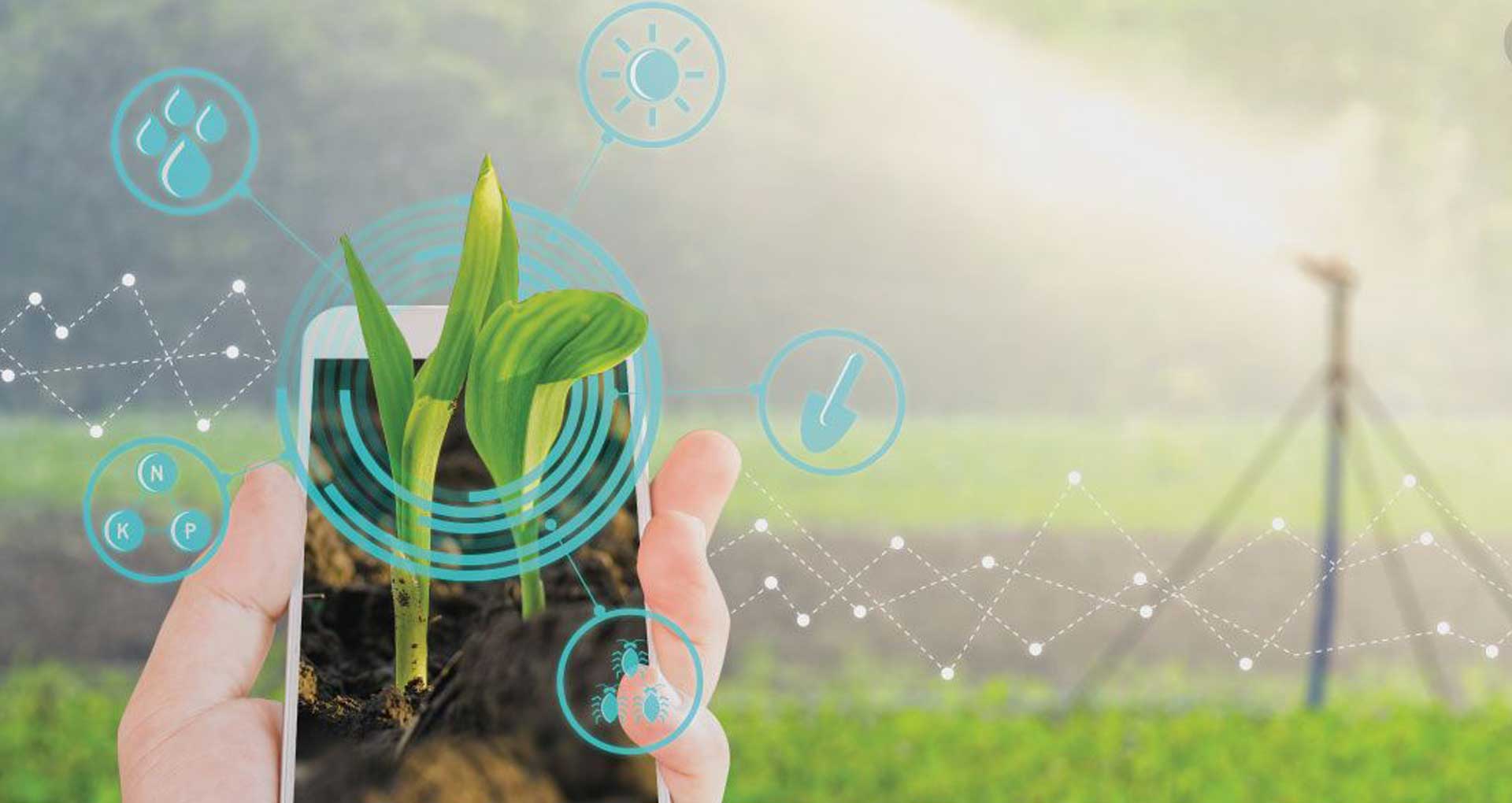
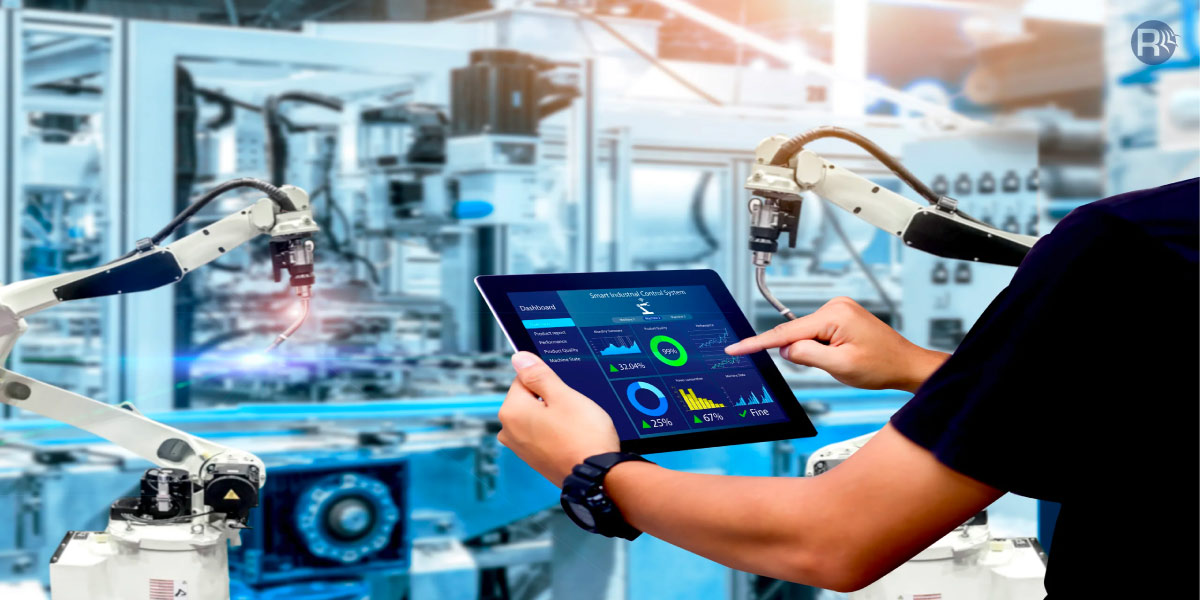
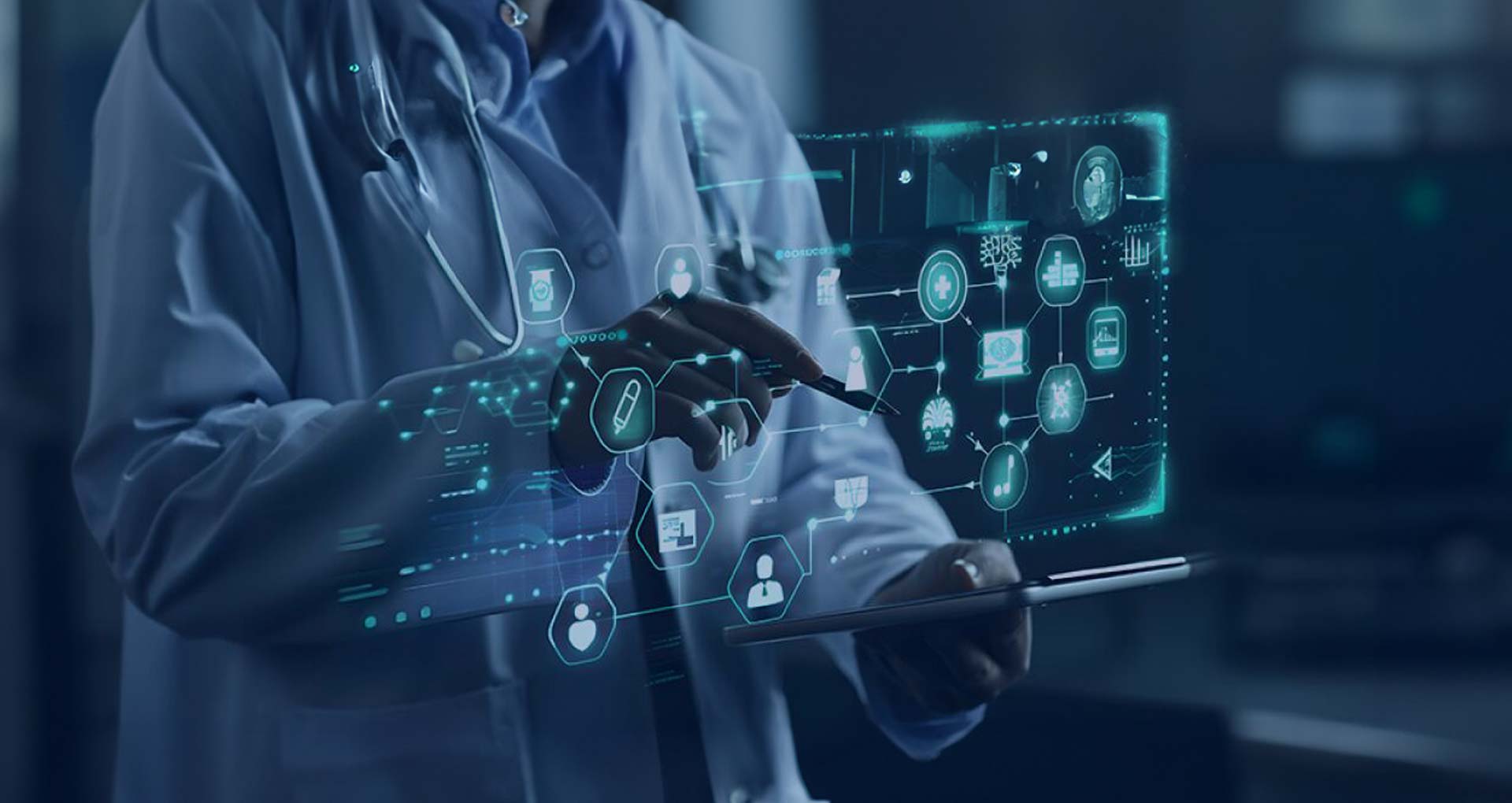
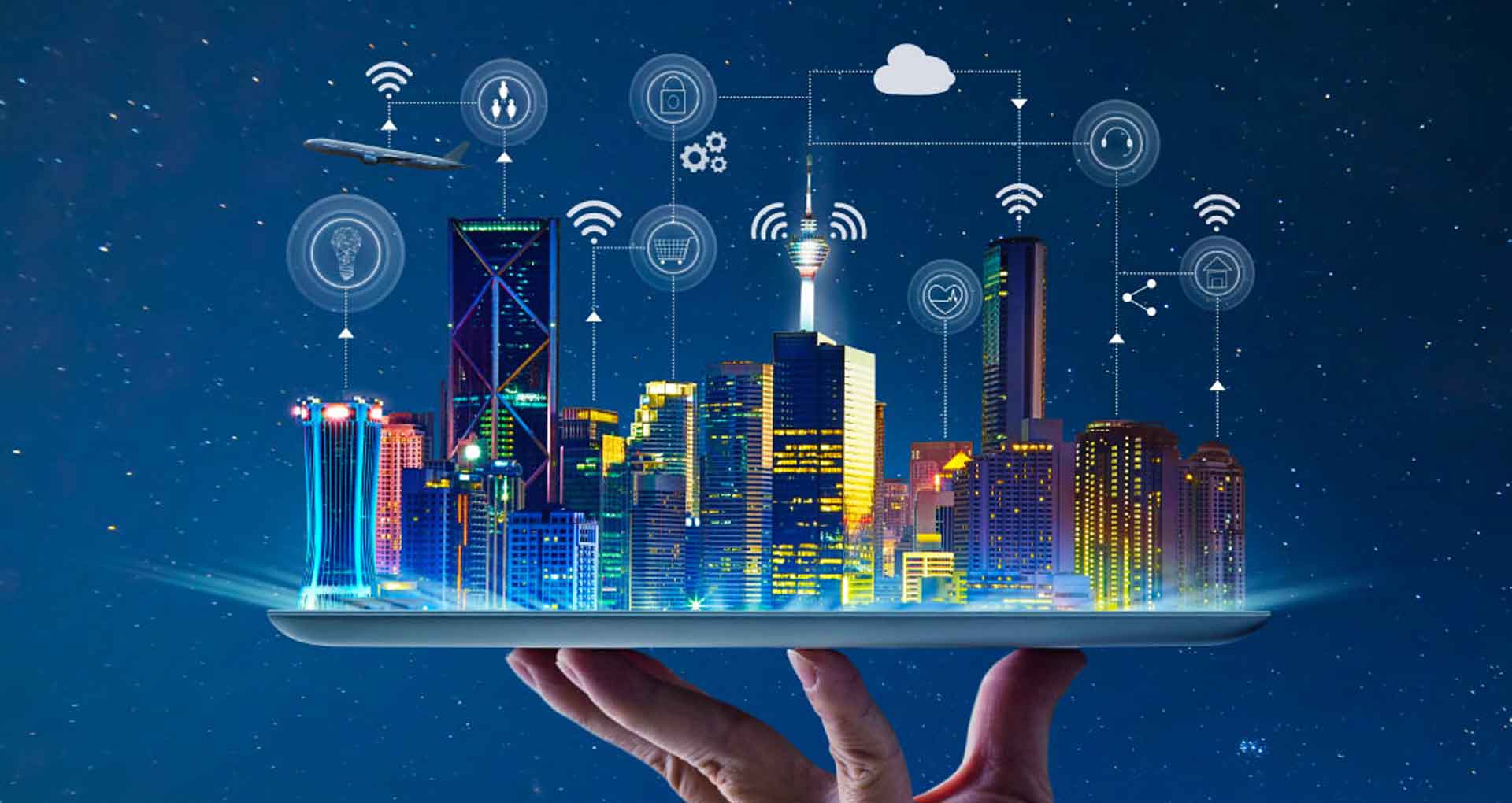
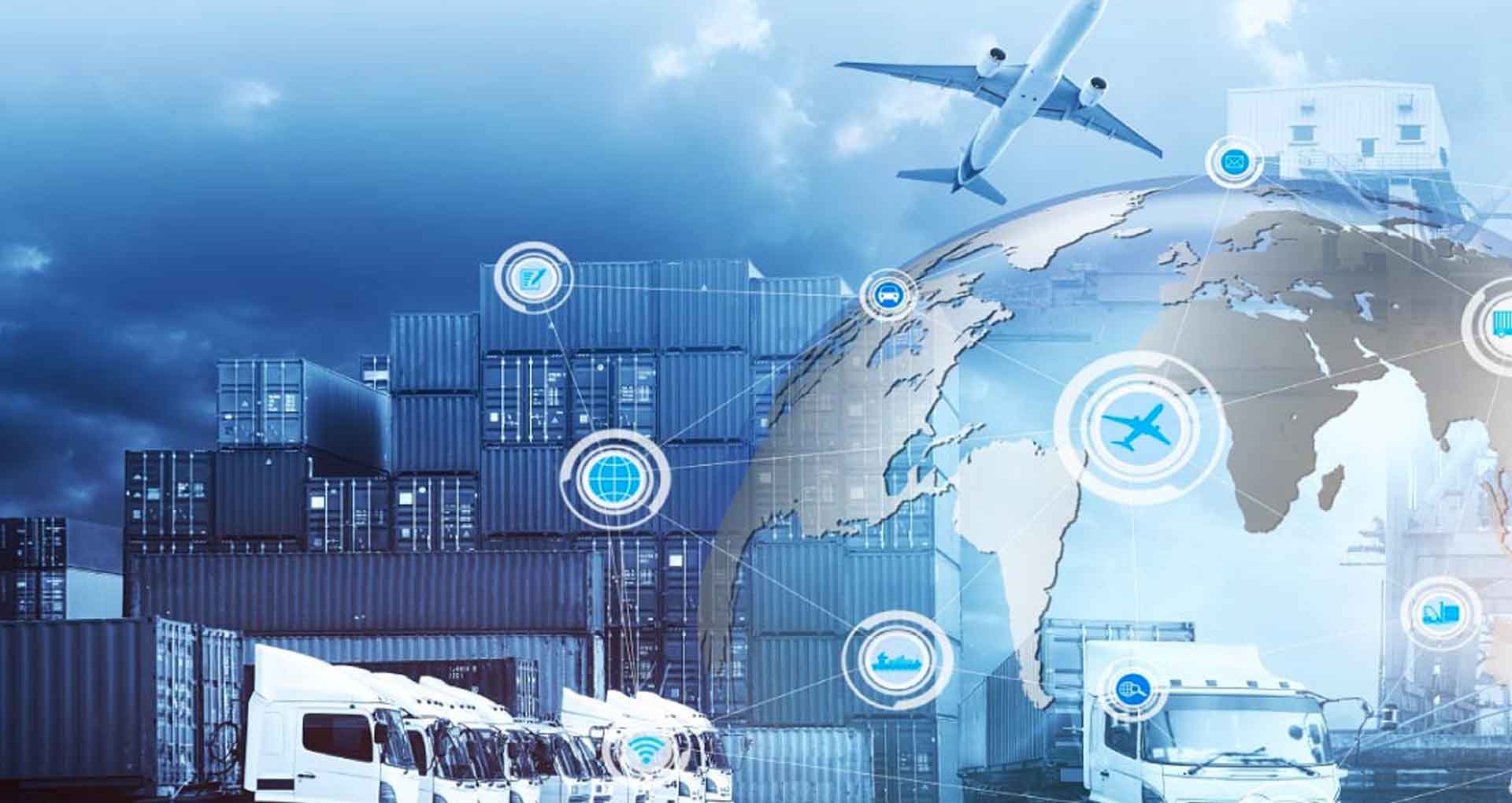


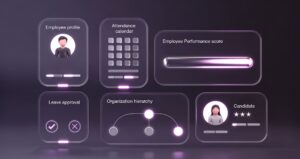


 30 Min
30 Min


